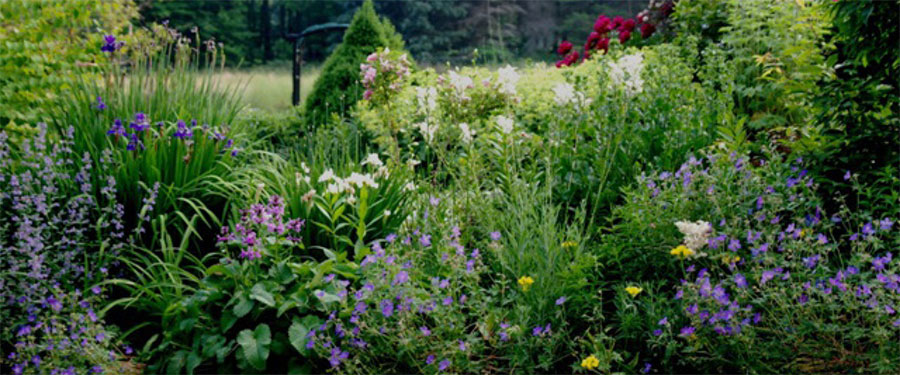Green Banks Gardening with Deborah Banks
Now that we are at the end of the fall gardening season, be honest. Was your garden finished after the summer phlox and coneflowers went to seed? Do you have plants you are excited about in autumn? Sure, most gardens have areas that look like death by September, especially for those of us who do not irrigate. Still, there are opportunities for fall garden glory beyond mums and pumpkins.
Japanese anemones are pure pleasure. They sit unassumingly in the background all summer, getting no attention at all, and then one day in September, they start flowering and you smugly take all the credit. Anemone japonica ‘Honorine Jobert’ is my favorite. It stands nearly four feet tall and has single flowers of pure white facing outward on thin sturdy stalks that seldom flop, even in my garden where staking is a theoretical concept, not a practice.
Have your friends told you yet about Colchicums? They are another joy in the fall garden. Often wrongly referred to as autumn crocus, Colchicums are another species entirely. They produce foliage in late spring similar to a daylily, which dies back by mid-summer. Then in the fall the bloom appears by itself on a short stalk just above the ground. The various cultivars have flowers in shades ranging from pink and rose to dark lilac, and also white. Some have white throats, others are solid pink. A special few have a subtle checkered pattern on the petals, known as tessellation. The showiest are the doubles, like Colchicum ‘Waterlily’ and C. ‘Alboplenum’. Unlike crocus, Colchicums are toxic, so the squirrels won’t eat them.
I tend to undervalue asters, since they bloom in every fence row in upstate New York, but there are many cultivars worth a second look. Aster ‘Purple Dome’ is a dwarf variety with heavy clusters of flowers in bright purple. Aster ‘Alma Potschke’ is a taller aster with flowers of an improbable shade of hot pink. Aster ‘Lady in Black’ is my favorite, with its greenish black leaves crowned in fall with clouds of tiny rose centered daisies with white petals. Aster lovers also rave about ‘Bluebird’ and ‘October Skies’.
Several other perennials are standouts in fall. Monkshood (Aconitum carmichaelii) has hooded purple blossoms on a plant with deeply-divided dark green leaves. Physotegia virginiana variegata has dark lilac flowers on ivory-green foliage that turns magenta as the nights get colder. Giant burnet (Sanguisorba tenuifolia) charms with its tall stems terminated by scads of small maroon bottle brushes. Toad Lily (Tricyrtis) graces the shade garden with its dainty and ornately-spotted flowers. Gentians are loved for their vivid blue blooms. Geranium ‘Rozanne’ continues to flower profusely until a hard frost ends her five or six month run. Bluestar (Amsonia hubrichtii) is lovely in spring with its light blue flowers and stunning in fall with sweeps of golden foliage.
There are three events in my fall garden that I particularly cherish. The first is when the leaves on my two Katsura trees (Cercidiphylum japonicum) start to color in golds and oranges, releasing a strong fragrance of melting sugar. Then the berries on my winterberry hollies (Ilex verticillata) change to a bright red. They are lovely amongst the holly leaves and even showier after the leaves drop. Finally, I love when my native witch hazel (Hamamelis virginiana) drops its yellow fall leaves, revealing the small yellow blossoms covering its branches. The spicy scent is noticeable and it draws a crowd of native bees on sunny fall days.
There are many other trees and shrubs that are outstanding in fall. The native maples are ablaze in golds and reds. The dark red ninebarks (Physocarpus) like ‘Diablo’ continue to wow with leaves of dark burgundy. The red-twig dogwoods (Cornus sericea ‘Cardinal’) have golden leaves and then drop them to reveal stems of red. The native sumac (Rhus typhina) is a fall beauty with leaves of fiery red and fuzzy dark red seed cones. The cultivar R. ‘Tiger Eyes’ has chartreuse summer foliage that changes to orange in fall.
Ornamental grasses are often at their best in fall. Japanese blood grass (Imperata cylindrica) is a short stunner that flames red as the nights become colder. Miscanthus sinensis purpurescens is one of the many grasses with showy plumes in fall. Panicum species like ‘Heavy Metal’ and ‘North Wind’ have airy clouds of bloom.
And did I mention seed heads? Many clematis species continue to hold their whirls of light-catching seed into fall. The seed heads on black-eyed susans and coneflowers provide food for birds. Then there’s the red or orange hips on roses, blue-black seed pods on Baptisias, puffs on nigella and poppies, and so much more.
It’s time to spice up your fall garden. Plant something next year that will make those mums look even better.

